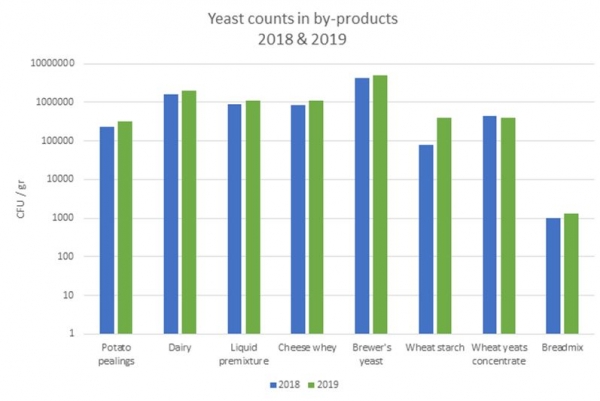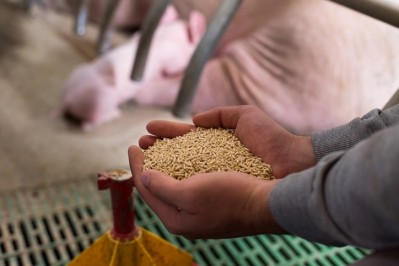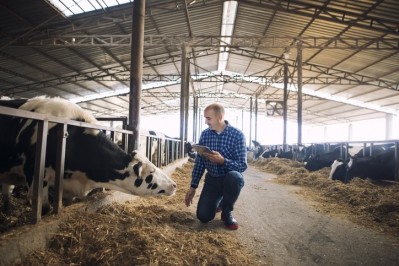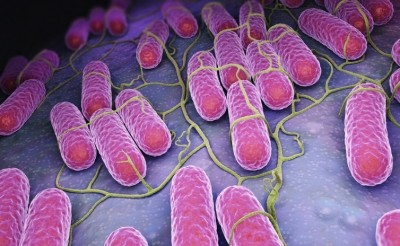Special Edition: Feed Safety
The safety challenges around liquid pig feeding
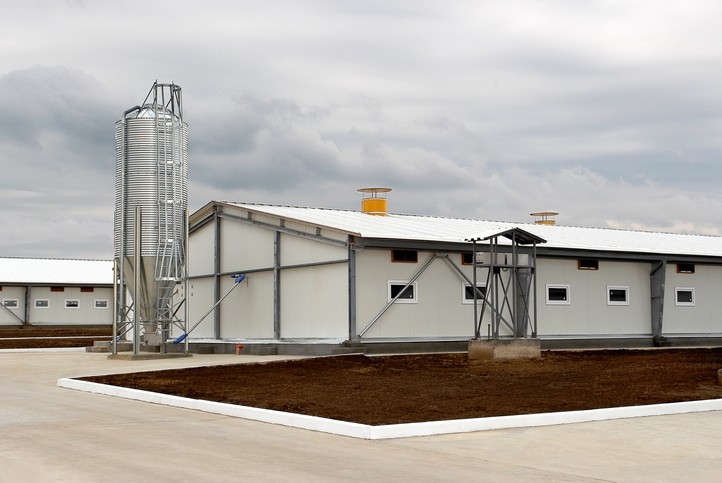
Liquid feed has become a popular feeding system for pigs in many European countries. It is the feeding method of choice in Ireland, where more than 70% of pigs are liquid-fed rather than dry-fed. The Netherlands would likely come next in terms of the prevalence of liquid pig feed systems in a European market, according to Peader Lawlor, researcher at Teagasc in Ireland.
“Once managed well, you can provide liquid feed to quite a significant number of animals. Labor wise, it is also interesting when upscaling the size of the farm,” said Evelien van Donselaar, global programme manager, feed safety, Trouw Nutrition.
Liquid feeding involves computer-controlled feed production, mixing dry ingredients, either with ethanol, brewing or food industry liquid by-products, or water, relying on a pipe system to deliver the feed to the pigs in the barn.
Re-using by-products enables pig farmers to produce high-quality protein in a sustainable and cost-effective manner. “The liquid feeding farms also enable a circular economy between industries and that is a vital aspect,” said van Donselaar.
Microbial quality
Once mixing occurs, microbial proliferation begins. Hence, the microbial quality of liquid feed and liquid feed system hygiene varies hugely from farm-to-farm.
“It is important to have a good balance in the fermentation, to have the dominant lactic acid bacteria to ferment in the right direction and to decrease pH,” she told us.
Molds, yeasts, lactic acid bacteria and Enterobacteria thrive in moisture-rich feed. Uncontrolled fermentation often results in increased populations of E. coli, Salmonella, yeasts and many other possible pathogens. These microorganisms make key nutrients in feed unavailable for the animals, resulting in poorer performance, explained van Donselaar.
“In terms of feed safety, it is critical to have the right fermentation there. Once fermentation goes wild, and you get dominant yeast for instance, then the situation changes completely. Instead of the pH going down, it goes up, and you get additional microbial challenges,” said van Donselaar.
Yeasts, molds and Enterobacteria are spoilage agents that convert proteins, sugars and starches into carbon dioxide and water. This not only reduces the dry matter content of feed but also influences the breakdown of essential amino acids such as lysine, said the Trouw Nutrition feed safety expert.
“You see different by-streams, different by-products have variable dry matter levels. Maintaining the dry matter at a certain level is of crucial importance, that means also controlling feed hygiene as once you have microbial activity, especially yeast, you very quickly have dry matter losses, at significant levels, sometimes over 20%. So, in this respect, the correlation between microbial control and nutritional knowledge comes together,” said van Donselaar.
A Teagasc project in Ireland is looking at optimizing liquid feeding for increased growth and improved feed efficiency in grow-finisher pigs. A podcast interview with project lead, Peader Lawlor, can be reviewed here.
Animal health
High yeast levels in liquid feed does not only cause nutritional losses. There can also be a direct impact on the health of the animals.
“If you bring down the pH level to 4, yeasts are still surviving. If that happens, and you deliver a high yeast containing feed to the animal, the yeast can pass the stomach and reach the intestine. At the intestinal level, the yeasts continue to ferment, they continue to produce gas. Quite often, the impact of that is underestimated, it can result in high pig mortality on farm due to torsions caused by colonic molting.”
Trouw Nutrition carries out, on average, 1,200 samples per year on by-products from dairy processors, breweries and grain processors. It notes variability in the microbial quality of co-products, that they can sometimes contain high numbers of microorganisms: “Farms often depend on the quality of the raw materials coming in,” noted van Donselaar.
The data below is based on an average of those 1,200 samples per year:
Control
An awareness of feed safety, then, is critical when using a liquid feed system. “Bubbles in the feed are a very clear visual sign of the presence of microbial activity, mainly due to the presence of yeast.”
Blends of organic acids and surfactants can control yeasts, molds and Enterobacteria in liquid pig feed, not only to extend shelf life but also to maintain nutritional values, stressed van Donselaar
In terms of Trouw Nutrition liquid feed on-farm support, it undertakes microbial analyses, provides dose recommendations, evaluates by-product buffer capacities, and can advise on treatment for residue in liquid feeding systems. Furthermore, dosing equipment can be installed to allow for safe and accurate dosing, said the company.
